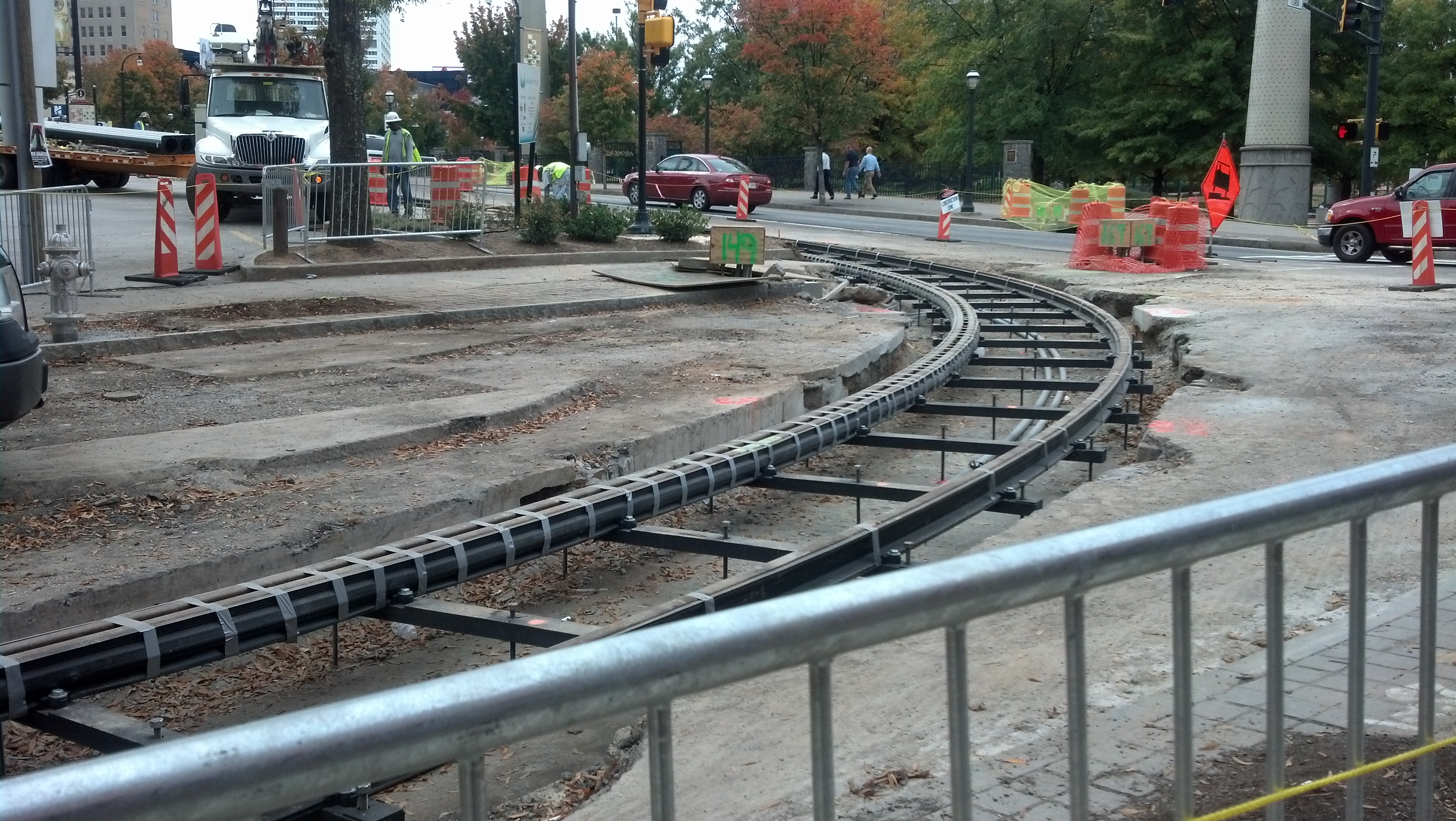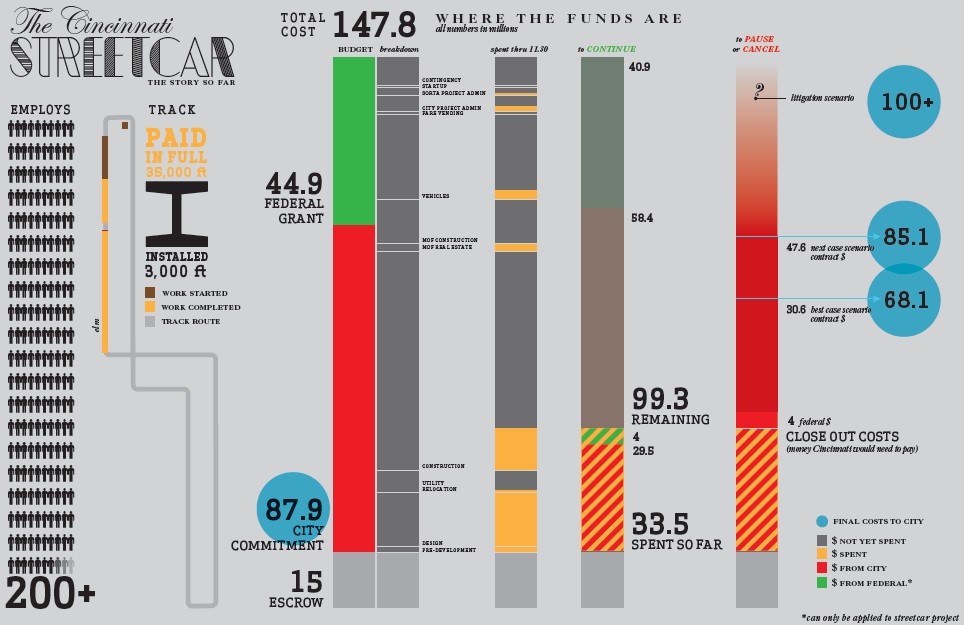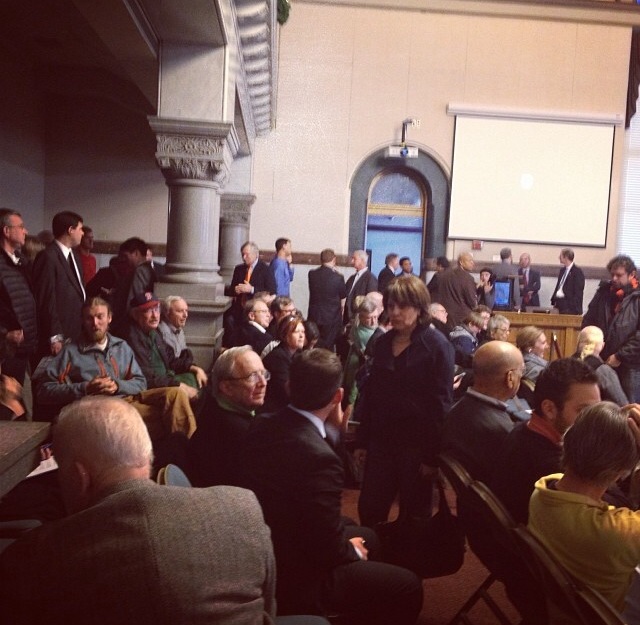Today was the day that would show the true colors of those members of council freshly sworn into office. They were faced with a decision of voting to continue and finish construction of the Cincinnati Streetcar project, or voting to pause and essentially cancel the project altogether.
A shifting landscape continued to alter the debate and make the whole vote more intriguing, and thus more revealing. Yesterday a confidential document was leaked, that courts had ordered remain confidential, and showed that city attorneys felt the city might lose its case against Duke Energy for the cost of relocating utilities along the streetcar line. Many suspect the document was leaked by Mayor John Cranley’s (D) administration. Such a legal loss would cost the City the $15 million it currently has set aside in escrow.
On Monday, the Haile/U.S. Bank Foundation had offered up private money to fund the independent financial review of the project, which was then matched by an anonymous contribution on Wednesday that would also cover the costs of construction to continue while that study was conducted. Both offers were turned down by Mayor Cranley and the five members of City Council who ultimately voted to pause the project indefinitely.
Acting City Manager Scott Stiles also informed City Council that such an action to “pause” the project would cost the City between $2.6 million to $3.6 million per month due to contractual obligations – a number that exceeds the total amount it costs to merely continue construction activities.
An official vote to continue or cancel the $133 million project is expected to come following the conclusion of the financial review.
Some city officials believe the move will result in the Federal Transit Administration pulling $40 million in unspent money from the project and beginning debt collection on the $5 million already spent by the city – thus increasing the local cost share for city taxpayers. Others believe that the way in which the 11 approved ordinances have been written give the City a limited amount of time before the federal government acts.
During the hearing there were times that both Vice Mayor David Mann (D) and Councilman Kevin Flynn (C) seemed to be conflicted. They had both campaigned on their skepticism of the project, but vowed to carefully review the facts and figures associated with cancelling the project at such an advanced stage. Those promises, however, appear to have been not much more than lip service in order to appease their progressive base of supporters.
What actually happens next is anyone’s guess. A lawsuit has been threatened by a Cincinnati resident and attorney alleging Councilman Christopher Smitherman (I), who was one of the five voting against the streetcar today, has a conflict of interest and therefore has committed wrongdoing by voting or engaging in official discussion on the matter.
Additional legal action may come from citizens trying to block today’s action by council that prohibits citizens from placing the matter on the ballot for a third time. Outside of that, both CAF and Prus appear poised to file lawsuits against the city for breach of contract.
If streetcar supporters are successful at getting the matter put on the ballot, such an issue could be placed before voters as soon as 90 to 120 days following that motion. Although, it is expected that the Federal government could still pull their investment during that time regardless.

As politicians continue to bicker over Cincinnati’s $133M streetcar project after six years, Atlanta blazes ahead with construction of its own $69M streetcar project near Centennial Olympic Park. Image provided to UrbanCincy.
What makes the whole matter more startling is the apparent change of heart from the city’s powerful business community. Earlier today, the Business Courier reported that leadership at companies including Procter & Gamble, Frost Brown Todd, CBRE, Otto M. Buding Family Foundation, Haile/U.S. Bank Foundation, Greiwe Development Group, Grandin Properties, Blue Chip Venture, Jack Rouse Associates and Fifth Third Bank all expressed specific interest in either finishing the streetcar project or moving forward with a comprehensive regional rail transit system.
The Cincinnati Enquirer has also changed their position in recent weeks calling on the new mayor and council to finish the project.
All this combined with the change of position by P.G. Sittenfeld (D), who is now in favor of finishing the streetcar project, have seemingly empowered the active pro-streetcar groups causing some to urge for a recall of Mayor Cranley. Recall election or not, streetcar supporters are stating the battle is not over after today’s expected vote.
Who knows what will happen next, but what happened this week defies logic. In a matter of just three days, the new mayor and council have undone all the work that has taken place over the past six years to get the streetcar project to this point. Some may call that rushed, chaotic and reckless, and we would be inclined to agree with those people.
We know many of our readers are very passionate about this issue and very much want to see the first phase of the streetcar not only completed, but eventually expanded city-wide in a manner that compliments regional rail and bus transit. We will be getting together at the Moerlein Lager House tomorrow from 5:30pm to 8:30pm for our monthly URBANexchange event, and we would love for you to join us and share your feelings and discuss what you think will or should happen next.





